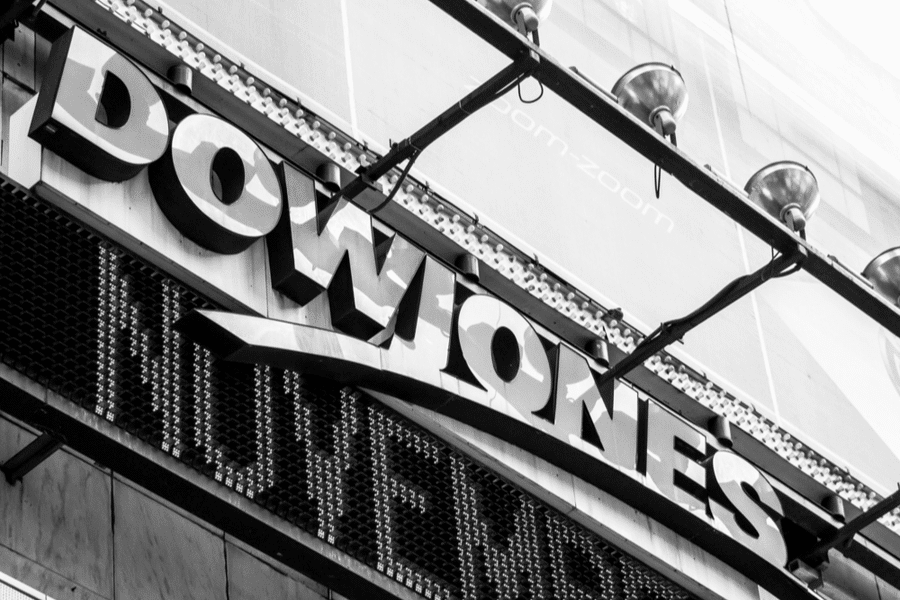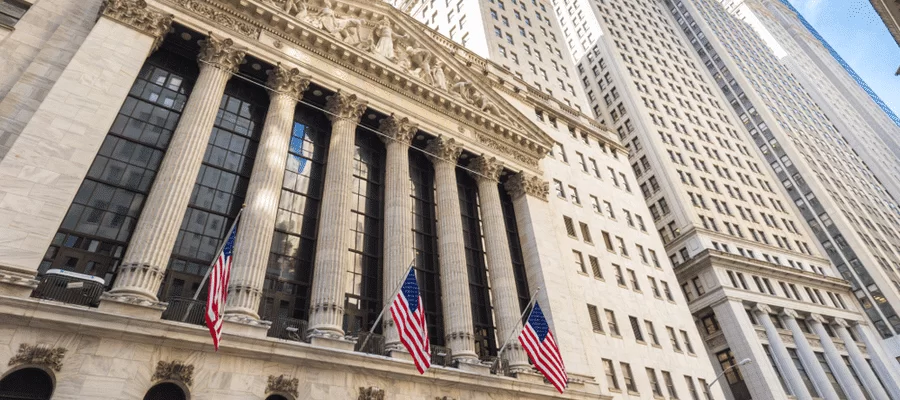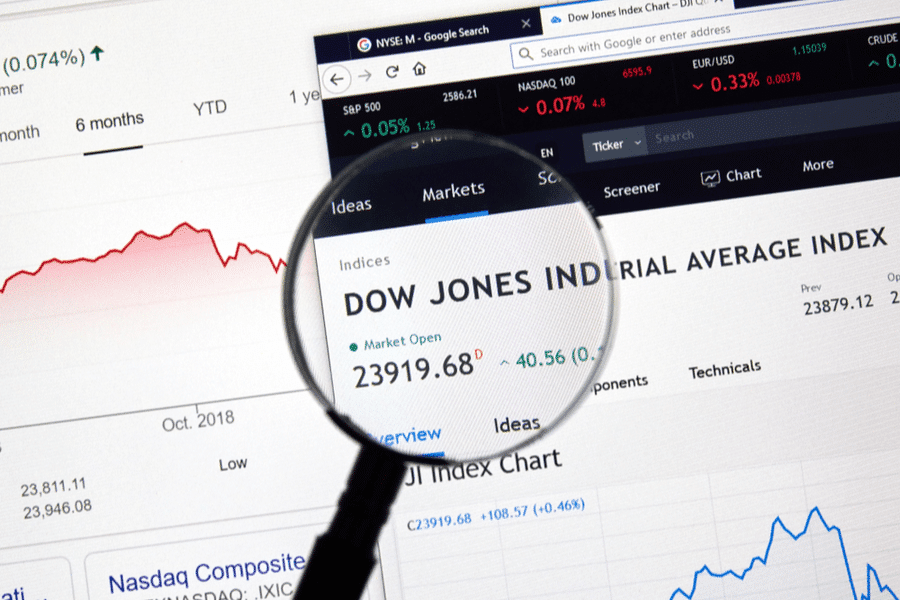
What is the Dow Jones index?
The Dow Jones Index is probably familiar to you. This is the longest-running stock index in the world. But how did this index actually come about?
The index is now known worldwide, but it once started small in America. The index was founded in 1896 by Charles Dow and Edward Jones. At the time, they were the editors of the Wall Street Journal. The index now has no less than 30 companies from all kinds of different sectors, such as McDonalds and Apple. Of course, that is not how it started: the index started with 12 industrial companies.
The Dow Jones index was originally known as the Dow Jones Industrial Average Index. People found this name too long and therefore it is often abbreviated to the ‘Dow Jones’. This index is also sometimes abbreviated to the ‘DJAI’.
What does the Dow Jones Index consist of?
The Dow Jones Index currently consists of no less than 30 American companies from all kinds of different sectors. Some people think that these 30 companies give a good representation of the current American economy, but you should be a little careful with this. This is because America is a large country that has more than these 30 companies. You can therefore keep a close eye on the S&P500 if you want to look at the American economy. The S&P500 is an index with the 500 companies with the largest market capitalizations. All these companies are all located in America.

How does the index differ from other indices?
The biggest way the index stands out from the crowd is in the way it weights stocks . Unlike most other stock indices, these indexes don’t necessarily discount small companies.
Weighting based on market value
The Dow Jones weighting is based on the price (market value) and not on the market capitalization. This means that a smaller company may be weighted more heavily than a large company, because the small company has a higher market value.
The difference between the market value and the market capitalization can arise, among other things, from the number of shares that a company has placed. When a company has placed many shares, the price of the shares automatically becomes lower, compared to a company that has placed few shares. As a result, a small company can have a higher market value than a large company (and therefore ultimately weigh more).
An unweighted index
The Dow Jones is a non-weighted index, unlike for example the AEX . This means that every company is equally important and carries the same weight.
Because the Dow Jones is an unweighted index, the index has been fairly stable in recent years. The Dow Jones index provides a picture of the economy in America. For example, the Dow Jones recently reached 30,000 points, while less than 2 years ago it did not even reach 25,000 points. For comparison: in 1972 the index only reached 1,000 points and in 1999 it reached 10,000 points. In 2017, it reached 20,000 points.
Start investing in an index
If you want to start investing in indexes you need a broker. Easily compare brokers with the tool of Compareallbrokers.com.
